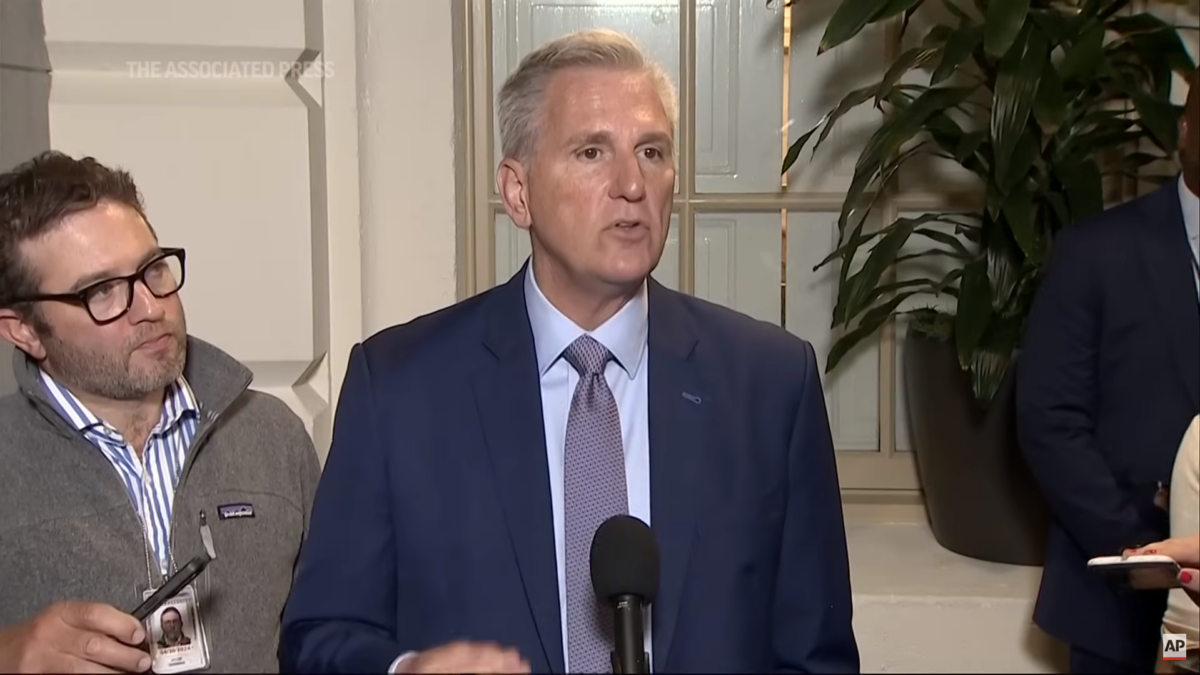
Some conservative and libertarian writers have expressed their concerns about a proposal to allow people to access a share of their Social Security benefits after the birth or adoption of a child, in return for delaying their retirement benefits to fully offset those costs.
Notably, this paid leave proposal would be structured to be at least revenue-neutral for Social Security, or it could even be designed to improve Social Security’s financial conditions by requiring people to give up retirement benefits of greater value than the parental leave benefits they use. The main criticisms from the Right are that the proposal would expand our nanny state, undermine needed reforms to the already financially insolvent Social Security system, and generally be an inappropriate and illegitimate expansion of the federal government
These are important and legitimate concerns. Yet there are reasons for optimism that this approach would work in the opposite direction, encouraging the consolidation and more efficient use of the social safety net programs that exist, rather than leading to their expansion.
Americans Aren’t Going to Give Up the Welfare State
When considering this proposal, it’s important to consider some political realities. In The Federalist, Robert Tracinski describes a potential beneficiary of this benefit, noting “Assuming there is a father who is able and willing to help support her,” a husband should be involved. Yet, like it or not, about 40 percent of U.S. births occur out of wedlock. Certainly we ought to consider how to reverse this trend and increase the share of children born with the support of two married parents, but we also need to recognize the present circumstances.
Moreover, while conservatives and libertarians ought to always be considering how we can restore government to its proper limits, improving the status quo requires recognizing that—for the foreseeable future at least—there will be a federal safety net to help people in need. Of course, overwhelmingly conservatives do recognize that, and often design reform proposals mean to reduce economic distortions created by welfare to minimize the need for its use and to better allow civil society and the free market to thrive, rather than solely push for their elimination, which is a nonstarter in Congress.
This is certainly true for Social Security. Everyone recognizes that Social Security is a pay-as-you-go transfer system, and no one has an actual legal “right” to money he or she paid in. Congress could at any time pass a law to abolish Social Security, and payments would simply stop.
Yet we also all know that’s not going to happen. Congress represents Americans, and they won’t accept eliminating a program they’ve paid into throughout their working lives, expecting retirement benefits. When Social Security reform is discussed, the starting point is always on preserving benefits for those on or near retirement. Proposed reductions to future benefits are typically phased in and designed to more greatly affect those with higher incomes, while preserving Social Security’s fundamental purpose of preventing poverty in old age. In short, Americans are not going to accept the wholesale elimination of Social Security—at least not any time soon.
The Alternative for a Woman on the Margins Is Welfare
The Social Security parental leave proposal should be considered in this context. A single working woman who lacks paid leave and gives birth has several options. Ideally, she will have saved money so she can afford to take time off to recover and care for her baby before resuming work. Yet she also knows that she could receive unemployment insurance and other forms of public assistance, depending on her state of residency. Indeed, nearly half of low-income women who lack access to paid leave resort to public assistance after giving birth.
By contrast, paid leave could encourage those women to stay employed, return to work, and not use other forms of public assistance. Importantly, unlike other public assistance programs, this Social Security parental leave program isn’t a “freebie” or a handout. People would know that accessing benefits now would mean they will have to wait for benefits later.
The public will also be aware of this social safety net approach and consider how it could apply in other instances. People support public assistance generally because they want a safety net to prevent hardship. But they also don’t want public assistance to be exploited and used as a long-term crutch. This approach could encourage an important mental shift with lasting implications for government’s safety nets more broadly.
This could include how Americans think about Social Security, which has long been considered the untouchable third rail of politics. Americans may begin to recognize that it’s rather strange that we require all workers to pay 12 percent of their income throughout their working lives, when they tend to have lower incomes and higher other expenses, then receive a massive government payout beginning at age 66, when many Americans are perfectly capable of and happy to continue working, and tend to be better off financially than ever before.
Adjustments to the retirement age might not seem so unthinkable when put in the context of these trade-offs, nor would more ambitious proposals to give workers more control over how their retirement funds are invested or used. Indeed, encouraging people to think about Social Security’s assets as if those benefits are their property for use now or at retirement could even encourage people to want to move more in that direction and transform the current pay-as-you-go system into one that pre-funds future benefits and with assets that belong to individuals
That may sound farfetched. But it’s no more farfetched than the idea that, after decades of promoting the idea of partial privatization, at long last, public opinion will undergo a sea change to embrace personal accounts or other substantial Social Security reforms.
The Ratchet Is Already Cranking
One last reality check: Currently six states have mandatory paid leave laws. Twenty-three additional states are considering paid leave proposals. As more of these pass, national businesses will increasingly push the federal government for relief from this patchwork of policies.
Last year, the American Enterprise Institute, along with the Brookings Institution, published a report calling for an entirely new entitlement program with a new payroll tax. Paid leave programs are overwhelmingly popular with the public—including with Republicans. Doing nothing on the federal level on paid leave may be an option for now, but it’s unlikely to succeed for long.
Conservatives and libertarians should carefully consider what the options are on this issue. No option is perfect, and all involve trade-offs. Those supporting the Social Security paid leave approach do so with the belief that this could be our best, most realistic option and could have long-term advantages in reshaping how the public thinks about government and public safety nets. If there are better alternatives that have a change of succeeding, we’d love to hear them.









